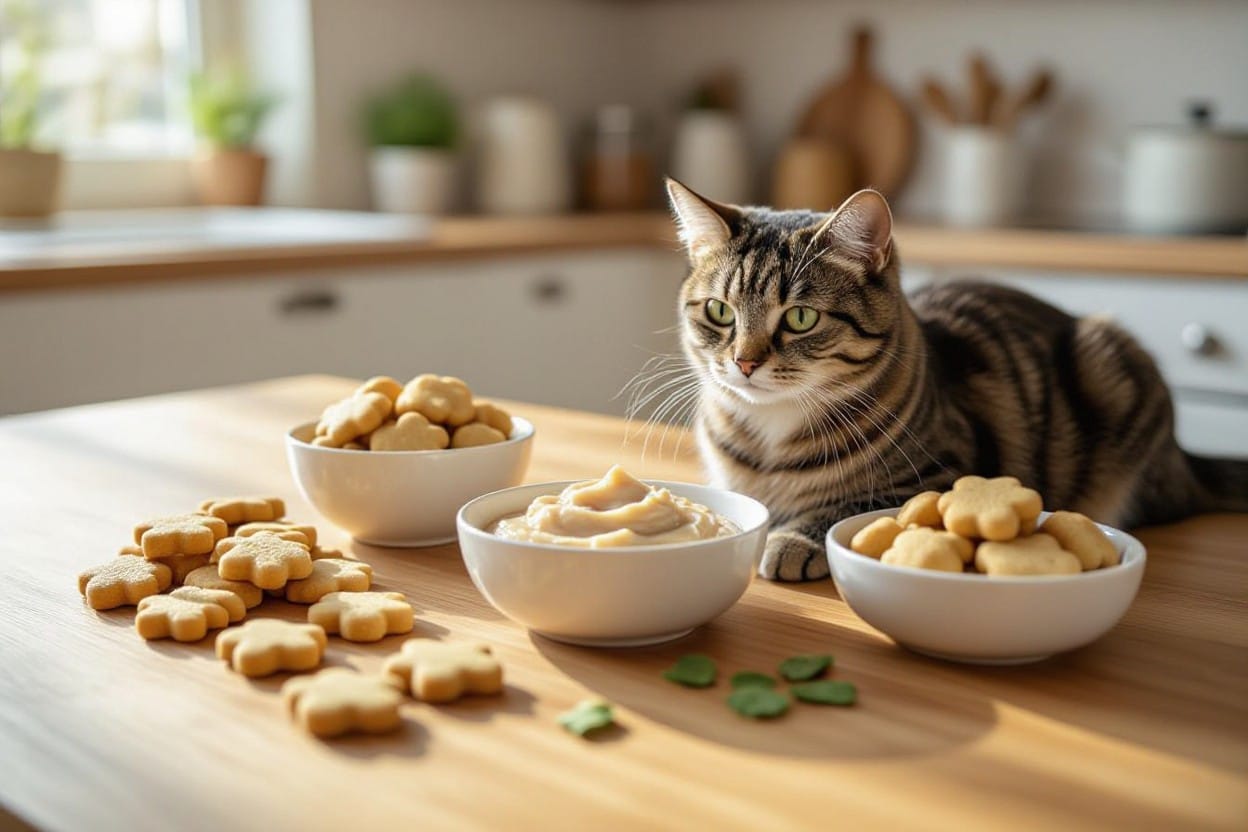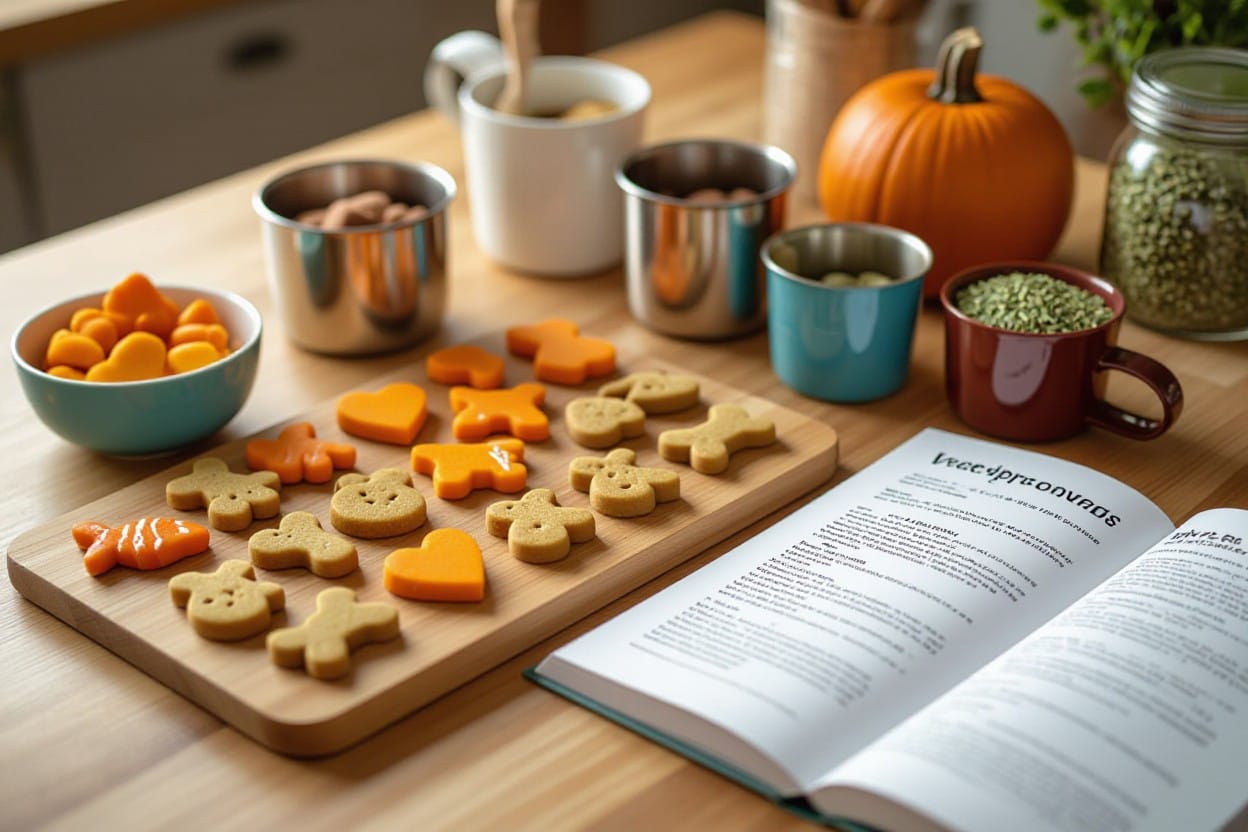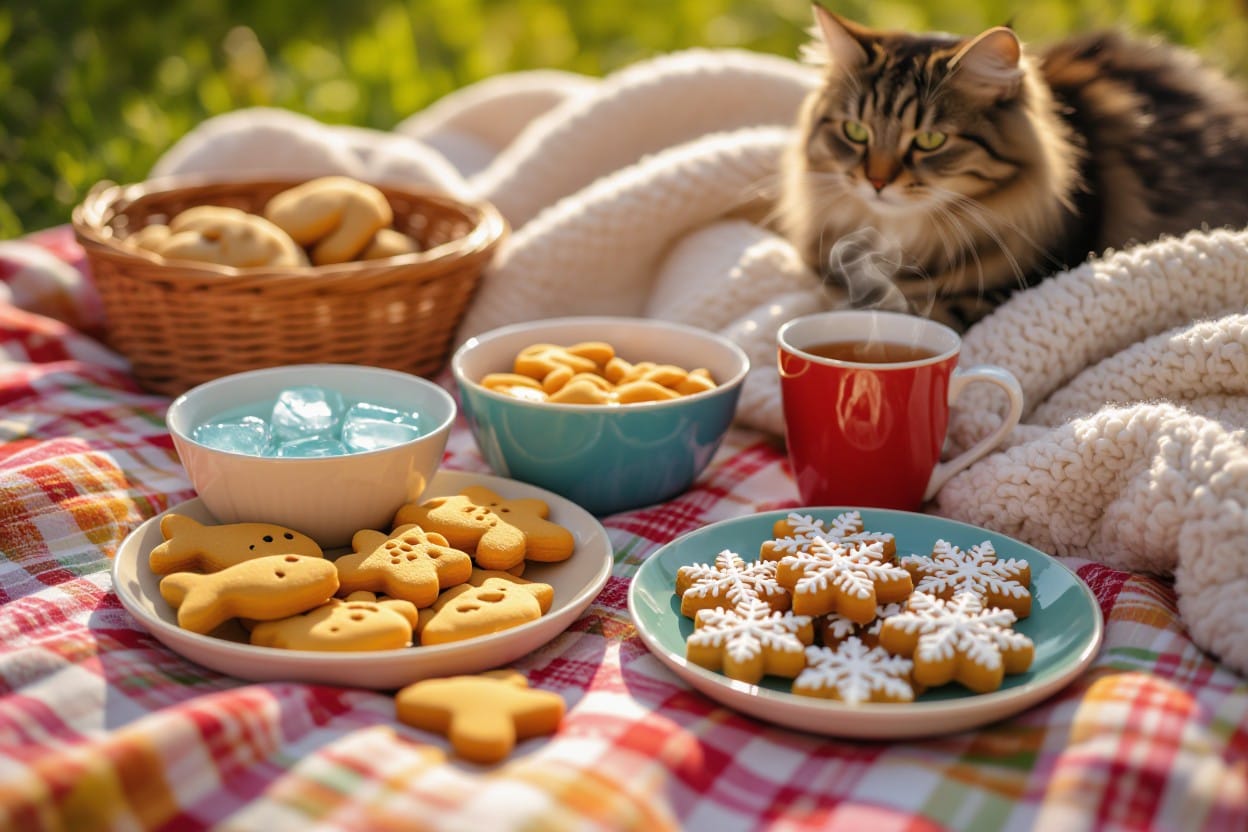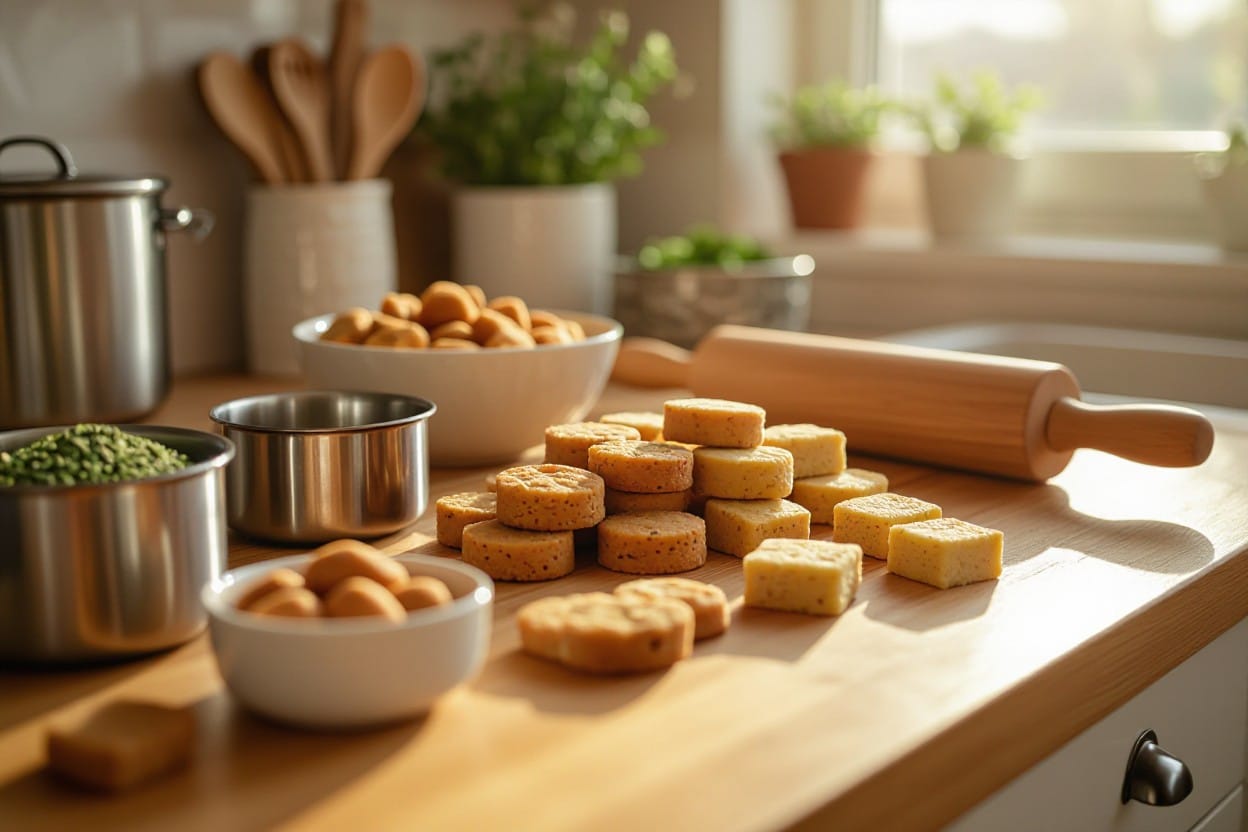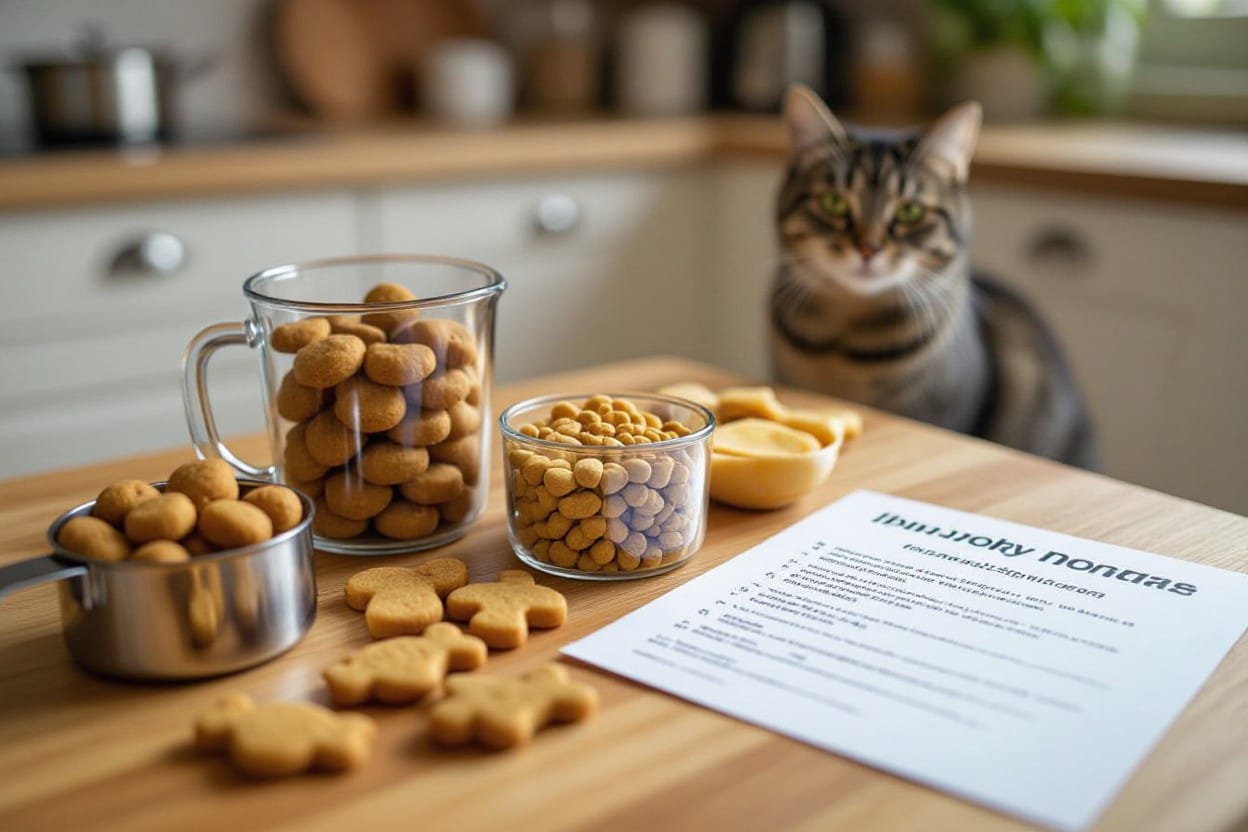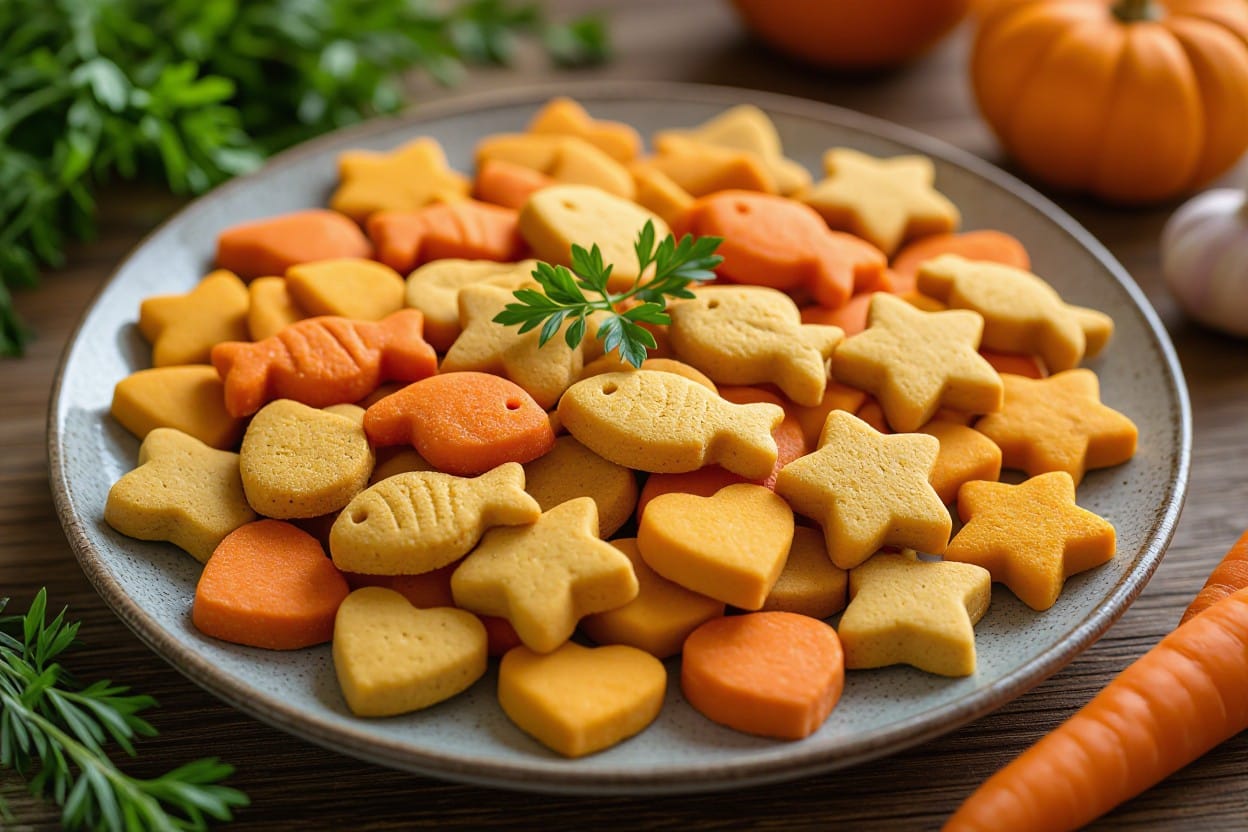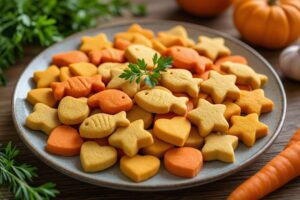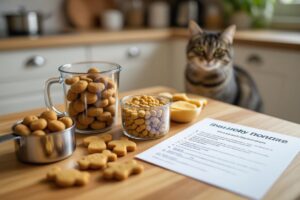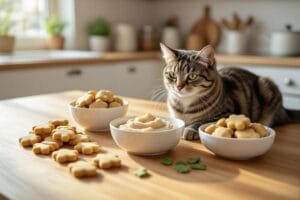Senior cats need treats that support aging bodies, so you can prepare soft cat treats for senior cats that prioritize moisture, digestible protein and limited phosphorus; when making senior cat treats homemade you should tailor textures and calories to your cat’s health and use easy to chew cat treats senior cats recipes. Always avoid toxic ingredients like onions, garlic, xylitol and excess salt, and choose recipes focused on balanced nutrients for elderly cat nutrition treats.
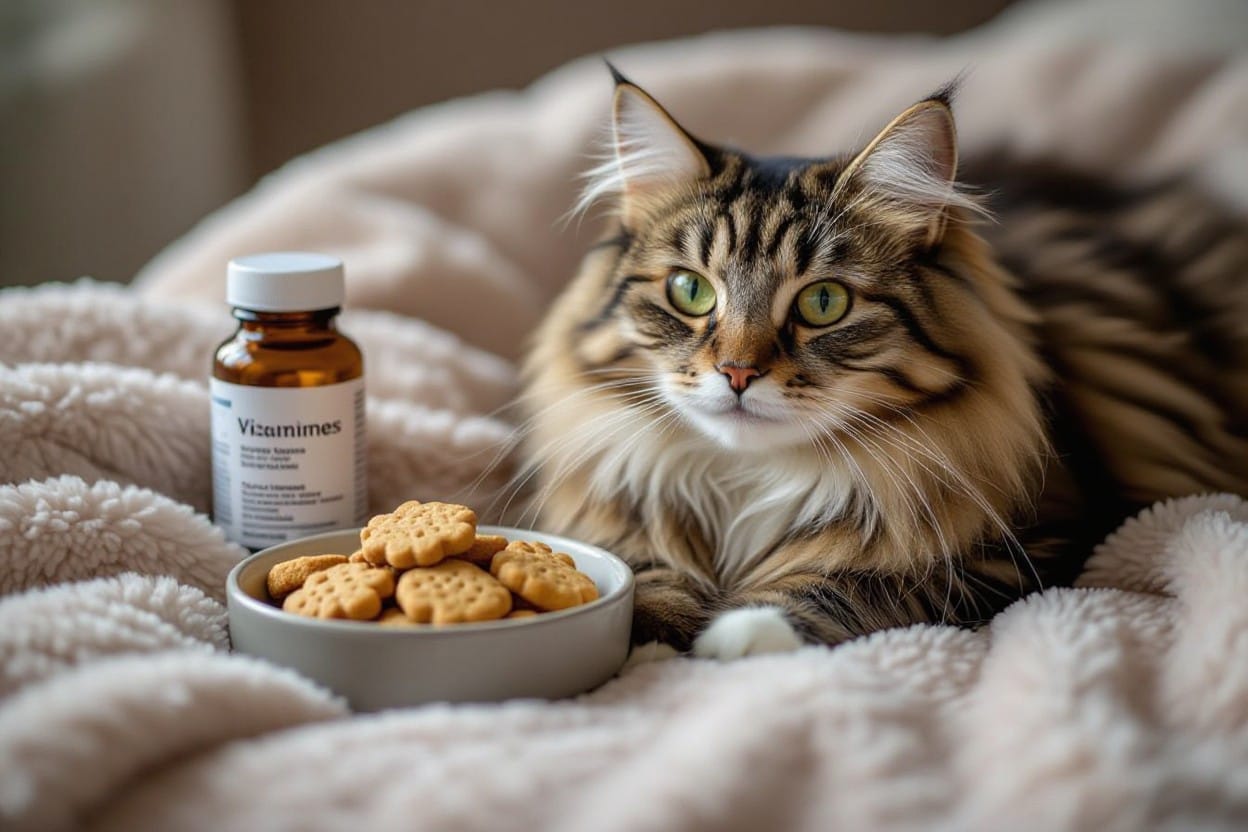
Key Takeaways:
- Formulate soft cat treats for senior cats with high moisture, low sodium, and tender binders (gelatin, oat flour) using lean proteins and pureed veggies for easy chewing and digestion.
- Make senior cat treats homemade to control protein levels, add omega‑3s and joint support (glucosamine), and offer portion‑controlled, vet‑approved snacks tailored to health needs.
- Choose elderly cat nutrition treats that follow easy to chew cat treats senior cats recipes—small, soft, low‑allergen batches to support weight maintenance, dental comfort, and nutrient absorption.
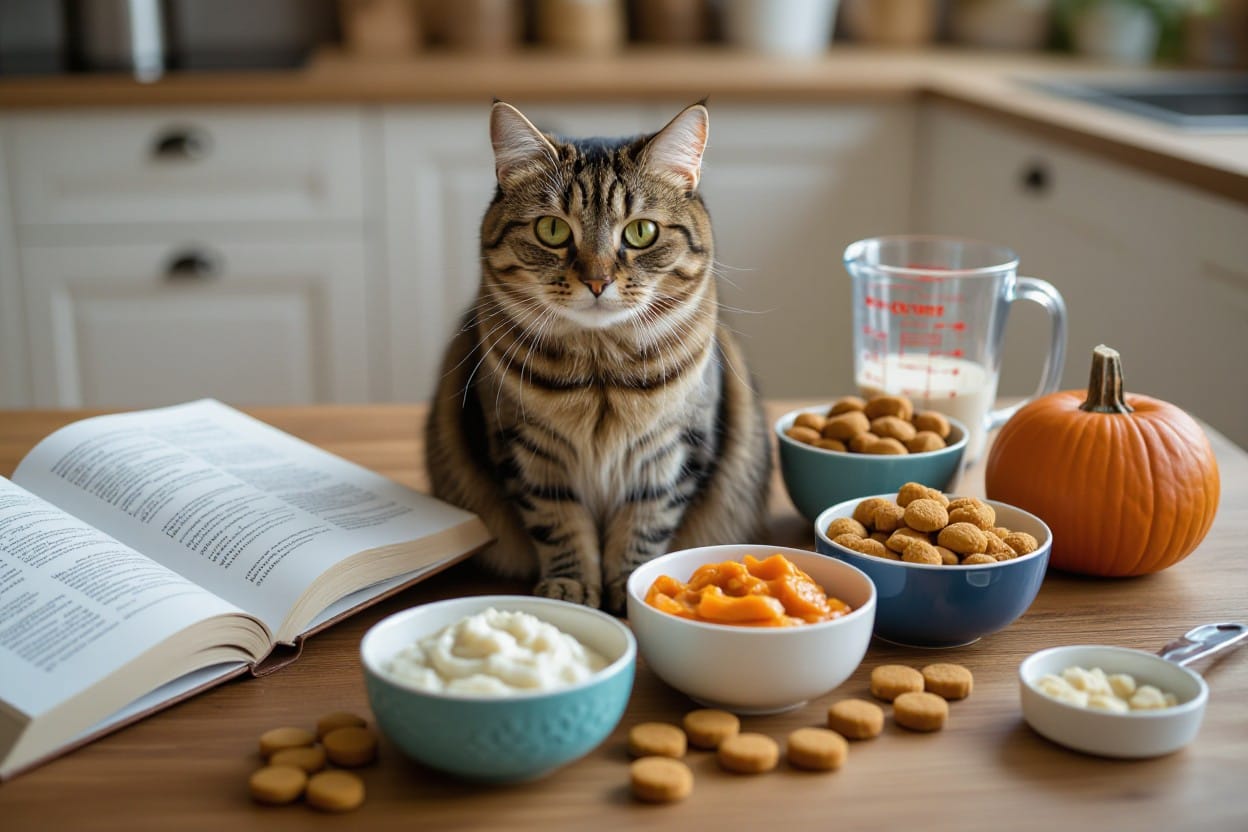
Understanding Senior Cat Health
Defining Senior Cats
Cats are commonly classified as seniors at around 7 years of age, with middle-aged at 7–10, senior at 11–14, and geriatric beyond 15; you may notice slower mobility, dental wear, or appetite changes as early signs. Indoor cats often live into their mid-teens, so planning for soft cat treats for senior cats and gentler textures helps address declining chewing ability and oral sensitivity.
Common Health Challenges in Aging Felines
Dental disease, osteoarthritis, chronic kidney disease and hyperthyroidism rank among the most frequent problems; radiographic signs of degenerative joint disease appear in up to 90% of cats over 12. You might also see weight loss, reduced grooming, and sensory decline that directly affect how well your cat can chew and enjoy treats.
Dental pain often reduces bite force and causes selective eating, so softness and small portion size become medical needs rather than luxuries. Kidney disease will push you toward higher-moisture options and lower phosphorus; arthritis favors easily picked-up, lightweight treats. Hyperthyroid cats may require calorie-controlled snacks, while overweight seniors benefit from nutrient-dense but small bites—designing homemade options means you can tune protein, fat and moisture for the specific condition your cat faces.
Importance of Nutritional Adaptations
Tailoring treats addresses altered metabolism, dental status, and organ function: prioritize higher moisture, moderate protein quality, and controlled phosphorus for elderly cat nutrition treats. You can make senior cat treats homemade that stay soft and palatable without adding unnecessary salt or phosphorus-heavy ingredients.
Practical adjustments include using pureed cooked chicken or canned fish in water for palatability, adding a small amount of plain pumpkin or bone broth to boost moisture and texture, and incorporating omega-3 sources to help inflammation. Avoid high-phosphorus additives for cats with kidney concerns and steer clear of toxic ingredients like onion or garlic. Testing one new recipe at a time lets you monitor appetite, stool quality and weight so your easy to chew cat treats senior cats recipes truly support health goals.
Nutritional Needs of Senior Cats
Age-Related Changes Affecting Nutrition
After about 11 years, your cat often shows lean muscle loss (sarcopenia), reduced activity and dental wear that lowers chewing ability and appetite. Metabolic rate and energy needs commonly drop by 10–30%, while dental pain or missing teeth make hard kibbles unappealing, so soft cat treats for senior cats can help maintain intake without forcing extra calories you don’t want.
Essential Nutrients for Older Cats
Your senior cat benefits from high-quality animal protein to preserve muscle — aim for formulations with concentrated, digestible protein (generally ≥30% on a dry-matter basis in treats) and adequate taurine. Add bioavailable fats with EPA/DHA for joint and cognitive support, plus antioxidant vitamins and B-complex for metabolic health; tailor phosphorus if your cat has renal disease. Use senior cat treats homemade that prioritize nutrient density and low fillers.
Pay attention to amino-acid balance: ingredients like cooked chicken, turkey or canned fish deliver complete protein and strong biological value, while eggs add leucine to stimulate muscle synthesis. Avoid excessive carbs or plant proteins that dilute vital amino acids; formulating elderly cat nutrition treats with concentrated protein per bite helps you deliver needed nutrients without overfeeding calories.
Hydration and Digestive Considerations
Older cats often drink less; target about 50–60 ml/kg/day of total water and use wet food or soft cat treats for senior cats to boost moisture. Add soluble fiber (small amounts of canned pumpkin) and gentle probiotics to support stool quality and microbiome balance, while softer textures reduce chewing strain for cats with dental disease. Choose easy to chew cat treats senior cats recipes that contribute to daily fluid goals.
In practice, canned foods provide ~70–80% moisture and count toward intake, and you can thin homemade treats with low-sodium chicken broth to increase palatability and hydration. Monitor stool frequency and consistency—if constipation or diarrhea appears, adjust fiber gradually and consider a vet-guided probiotic or digestive enzyme to improve nutrient absorption and comfort.
Soft Treats: Why Texture Matters
Benefits of Soft Treats for Senior Cats
Older teeth and reduced jaw strength make soft cat treats for senior cats easier to eat, helping you maintain treat-based training or enrichment without forcing hard chewing. Soft options reduce wear on fragile teeth, lower choking risk, and can deliver concentrated nutrients like added taurine or omega-3s in small portions. Studies and clinical observations show many geriatric cats eat more consistently when treats are moist and tender, so you can support appetite and weight with elderly cat nutrition treats that are easy to masticate.
Types of Treat Textures
Pate and purees glide across the tongue, minced-in-gravy treats offer chew-plus-moisture, soft-baked chews provide bite without hardness, rehydrated freeze-dried pieces restore tenderness, and mousse/gel treats deliver high moisture with minimal effort. You can test 2–3 textures to find a clear preference and adjust recipes toward higher moisture or shorter particle size for easier chewing.
- soft cat treats for senior cats — pate, mousse, and rehydrated pieces that minimize chewing effort
- senior cat treats homemade — small-batch purees and soft-bakes you control for salt and phosphorus
- elderly cat nutrition treats — fortified soft treats with added taurine, EPA/DHA, or joint supplements
Assume that you should introduce one new texture at a time and track intake over 3–5 days to identify true preference.
| Texture | How it helps |
|---|---|
| Pate / Puree | Zero chewing required; ideal for severe dental disease or missing teeth; mixes easily with supplements. |
| Minced in Gravy | Small soft pieces maintain mouthfeel while adding moisture to improve palatability and swallowing. |
| Soft-baked | Provides bite satisfaction without hardness; lower risk of fractured teeth than traditional biscuits. |
| Rehydrated Freeze-Dried | Lightweight storage; reconstitute to desired softness and aroma to entice fussy eaters. |
When you develop senior cat treats homemade, aim for particle sizes under 3–4 mm for minced textures, keep individual treat portions to 1–2 g for calorie control, and test moisture levels so treats stay pliable at room temperature; incorporating up to one tablespoon of water or low-sodium broth per 25 g batch often yields a soft, palatable result.
- easy to chew cat treats senior cats recipes — recipes that yield soft cat treats for senior cats with 1–2 g portions
- senior cat treats homemade — limit sodium and phosphorus when you add supplements or dairy
- elderly cat nutrition treats — consider single-ingredient protein purees (chicken, fish) for sensitive stomachs
Assume that you will adjust texture and nutrient density based on dental exams and appetite changes, consulting your vet for supplements.
How Texture Affects Acceptance
Many senior cats prioritize ease of manipulation and aroma over crunch; softer, moister textures increase immediate intake and reduce selective refusal. Offer 1–2 cm pieces or teaspoon-sized dollops, keep daily treat calories under 10% of total intake, and note that palatability often spikes when moisture or gravy is present—so you can use texture to overcome mild inappetence or medication aversion.
To refine acceptance, run simple preference trials: present two textures side-by-side for three consecutive sessions, measure grams consumed, and monitor behavior (purring, pawing at bowl, or avoidance). If your cat consistently eats >70% of one option, scale recipes toward that texture and consult your veterinarian before adding joint or renal-focused supplements; watch for signs of aspiration or coughing and avoid overly sticky consistencies that could pose a choking risk.
Recipe Essentials for Soft Treats
Key Ingredients to Include
Focus on high-quality animal protein like cooked chicken, turkey, or canned salmon (water-packed) as the base; add moisture with low-sodium bone or fish broth and 1–2 tablespoons of canned pumpkin per cup of mix for fiber; use unflavored gelatin (about 1 tsp per cup of warm broth) or canned tuna in water as binders for soft cat treats for senior cats; finish with a drop of fish oil for omega-3s and a pinch of powdered taurine if your cat’s diet lacks it for optimal elderly cat nutrition treats.
Avoiding Harmful Ingredients
Exclude onion, garlic, chocolate, grapes/raisins, artificial sweeteners like xylitol, raw bread dough, alcohol, and excessive salt; skip bones, large amounts of liver, and dairy that can cause GI upset, keeping your treats safe and aligned with best senior cat treats homemade practices.
Onion and garlic (allium species) can cause oxidative red‑cell damage and Heinz body anemia at doses around 5 g/kg body weight, while xylitol has caused rapid hypoglycemia and liver failure in other species so you must treat it as highly dangerous; avoid raw eggs and raw fish due to bacterial risk and possible thiamine loss, and never use bones that can splinter and obstruct or perforate the GI tract.
Health Benefits of Each Ingredient
Lean proteins supply vital amino acids and taurine for heart and vision, bone/fish broth increases hydration and electrolytes, pumpkin adds soluble fiber for stool consistency, gelatin supplies collagen peptides for joint support, and omega‑3s reduce inflammation—combine these for easy to chew cat treats senior cats recipes that support muscle, joints, digestion, and hydration.
Collagen from gelatin may improve mobility by supplying glycine and proline; studies in older pets show EPA/DHA reduce inflammatory markers and improve stiffness; supplemental taurine prevents dilated cardiomyopathy and retinal degeneration if dietary intake is low; aim to keep treats under 10% of daily calories so these benefits support rather than unbalance your cat’s overall diet.
Recipe Collection: Puree-Based Treats
Salmon Mousse Recipe
Blend 4 oz cooked salmon (no bones) with 1 tbsp low-sodium chicken broth and ½ tsp unflavored gelatin until silky; chill to set. You’ll give your senior cat a moist, omega-3 rich treat that supports coat and joint health—ideal as one of your soft cat treats for senior cats and an easy to chew cat treats senior cats recipes topper for hesitant eaters.
Chicken Liver Pate Recipe
Sauté 3 oz chicken liver briefly, cool, then blend with 1 tbsp oat flour, 1 tsp olive oil, and 1–2 tbsp water or low-sodium broth to reach pate consistency. Texture is soft for seniors with sarcopenia-related chewing changes, and the pate provides concentrated B12 and iron as a flavorful senior cat treats homemade option.
Limit liver frequency: keep liver under 5% of your cat’s weekly protein intake because excess vitamin A and copper can cause toxicity. Avoid daily servings; offer liver pate only once or twice weekly and consult your vet if your cat has hepatic, renal, or nutritional conditions before regular use.
Tuna Spread Recipe
Mix 2 oz canned tuna in water (drained, low-sodium) with 1 tbsp plain pumpkin and ½ tsp unflavored gelatin, then puree until smooth. Use small dollops as a high-palate, high-moisture topper that increases calorie intake for picky seniors—fits well among your senior cat treats homemade repertoire and counts as an easy to chew cat treats senior cats recipes solution.
Use tuna sparingly: limit to once weekly to reduce mercury exposure and avoid nutritional imbalance from frequent tuna treats. Prefer canned tuna in water, rotate with other lean proteins, and mix the spread into wet food to boost moisture for older cats with decreased thirst.
Recipe Collection: Easy-Chew Options
Soft Fish Cakes Recipe
Use 4 oz canned salmon (drained, boneless), 1 egg, 2 tbsp oat flour and 1 tbsp mashed sweet potato; form 8 small patties and bake at 350°F for 12–15 minutes. You’ll create soft cat treats for senior cats with high omega-3s; remove all bones and use no added salt, onion, or garlic to avoid toxicity.
Meat Loaf Squares Recipe
Blend 6 oz lean ground turkey, 1/4 cup cooked white rice, 1 egg and 1 tbsp low-sodium chicken broth, press into a mini loaf pan and bake at 350°F for 20–25 minutes; cool and cut into bite-sized squares for senior cat treats homemade that stay moist for easy chewing.
Store refrigerated for up to 3 days or freeze individual squares for 4 weeks; feed 1–3 small squares per treat session depending on your cat’s size (typical 8–10 lb cat tolerates ~2 small squares). Avoid added salt and high-fat mixes; lean protein supports muscle mass in elderly cats while keeping calories controlled.
Cheese Melts Recipe
Mix 2 tbsp low-fat ricotta or cottage cheese, 1 tbsp drained tuna water, and 1 tbsp oat flour; drop teaspoonfuls on parchment and bake at 300°F for 8–10 minutes until just set. You’ll have easy to chew cat treats senior cats recipes that appeal to picky eaters—use low-sodium, low-lactose options and keep portions small.
Offer cheese melts as an occasional topper or training reward since cheese is higher in fat and sodium; for cats with kidney or pancreatitis concerns, avoid frequent servings. Warm a melt briefly to soften further for cats with dental issues and monitor for digestive upset after first feeding.
Recipe Collection: Hydrating Treats
Broth Jellies Recipe
Use 1 cup low-sodium chicken or fish broth and 1 tsp unflavored gelatin per cup: sprinkle gelatin over 2 tbsp cold water, let bloom 2 minutes, whisk into warm (not boiling) broth until dissolved, pour into small silicone molds and chill 2–3 hours. Serve one or two cubes as soft cat treats for senior cats; high moisture aids hydration. Store refrigerated up to 3 days or freeze up to 3 months. Avoid broths with onion, garlic, or excess salt.
Soup Treats Recipe
Blend 2 oz shredded cooked chicken or salmon with 1/4 cup low-sodium broth until silky; add 1 tbsp pureed pumpkin for fiber if desired, warm to 165°F then cool before serving a tablespoon at a time. This makes easy to chew cat treats senior cats recipes that help cats with decreased appetite or dental sensitivity. Strain thoroughly to remove any bone fragments and refrigerate 48–72 hours.
Adjust texture by adding 1 tsp gelatin per cup to make a spoonable custard or use an immersion blender to reach the consistency your cat prefers; thinner soups work for syringe feeding and thicker, spoonable soups give more oral engagement. Add a few drops of fish oil for palatability and omega‑3s but avoid exceeding manufacturer dosing; avoid onion, garlic, grapes, raisins, and xylitol in any mix.
Smoothie Bowls Recipe
Combine 2 tbsp canned tuna in water (drained) or cooked flaked salmon with 1–2 tbsp low-sodium broth and 1 tsp pureed carrot or pumpkin; blitz until very smooth and pour into a shallow ramekin. Chill briefly so it firms slightly; serve small spoonfuls as senior cat treats homemade that are nutrient-dense and easy to chew. Keep refrigerated up to 48 hours and avoid dairy, salt, and garlic/onion.
Enhance nutrition by stirring in a small measured dose of a feline multivitamin or taurine powder as directed—many treat batches use roughly 100–250 mg taurine per serving, but verify exact dosing with your vet. Freeze individual portions for convenient thaw-and-serve treats; thaw in the fridge and never refreeze once fully thawed.
Incorporating Joint Support in Treats
Natural Anti-Inflammatory Ingredients
Include omega-3 sources like fish oil (EPA/DHA), powdered green-lipped mussel, and small amounts of turmeric or ginger in your soft cat treats for senior cats to reduce joint inflammation. Use low, controlled amounts—for example, 50–150 mg EPA+DHA per treat chunk—because high doses can cause GI upset or interact with blood-thinning medications; avoid giving garlic or onion-based mixes. Test a single treat and watch for vomiting, diarrhea, or lethargy.
Mobility-Supporting Nutrients
Glucosamine and chondroitin support cartilage repair and are commonly used in senior cat treats homemade recipes; MSM and hydrolyzed collagen add joint-flexibility benefits and palatability. Choose powdered supplements that mix easily into wet bases so your easy to chew cat treats senior cats recipes stay soft, and aim for portions that fit your cat’s daily supplement target rather than one large dose.
For more depth, pair glucosamine sulfate (often 250–500 mg formulations) with chondroitin sulfate and MSM in small daily totals rather than single large treats—glucosamine supports matrix synthesis while chondroitin improves water retention in cartilage. Collagen peptides (500 mg or less per day) can boost joint comfort; green-lipped mussel provides unique glycosaminoglycans plus EPA. Use measured teaspoons of veterinary-grade powders and label homemade batches so you don’t exceed the recommended daily totals.
Appropriate Dosages for Senior Cats
Target known safe ranges: glucosamine about 125–500 mg/day depending on cat size, and combined EPA+DHA roughly 20–55 mg/kg/day (a 4 kg cat needs ~80–220 mg/day). Split doses across treats and combine with regular food to avoid stomach upset. Avoid exceeding labeled veterinary doses and check interactions if your cat is on blood thinners or other medications.
Calculate doses by weight and ingredient concentration: if a fish oil capsule contains 300 mg EPA+DHA, use a fraction (¼–½ capsule) per day for a 4 kg cat and divide into two treats. For glucosamine, many commercial feline supplements recommend 250–500 mg/day; reduce to the lower end for cats under 4 kg. Observe for side effects—loose stools, increased thirst, or decreased appetite—and stop supplementation and consult your vet if you see these. Keep a written log of daily totals when using elderly cat nutrition treats so you can adjust precisely.
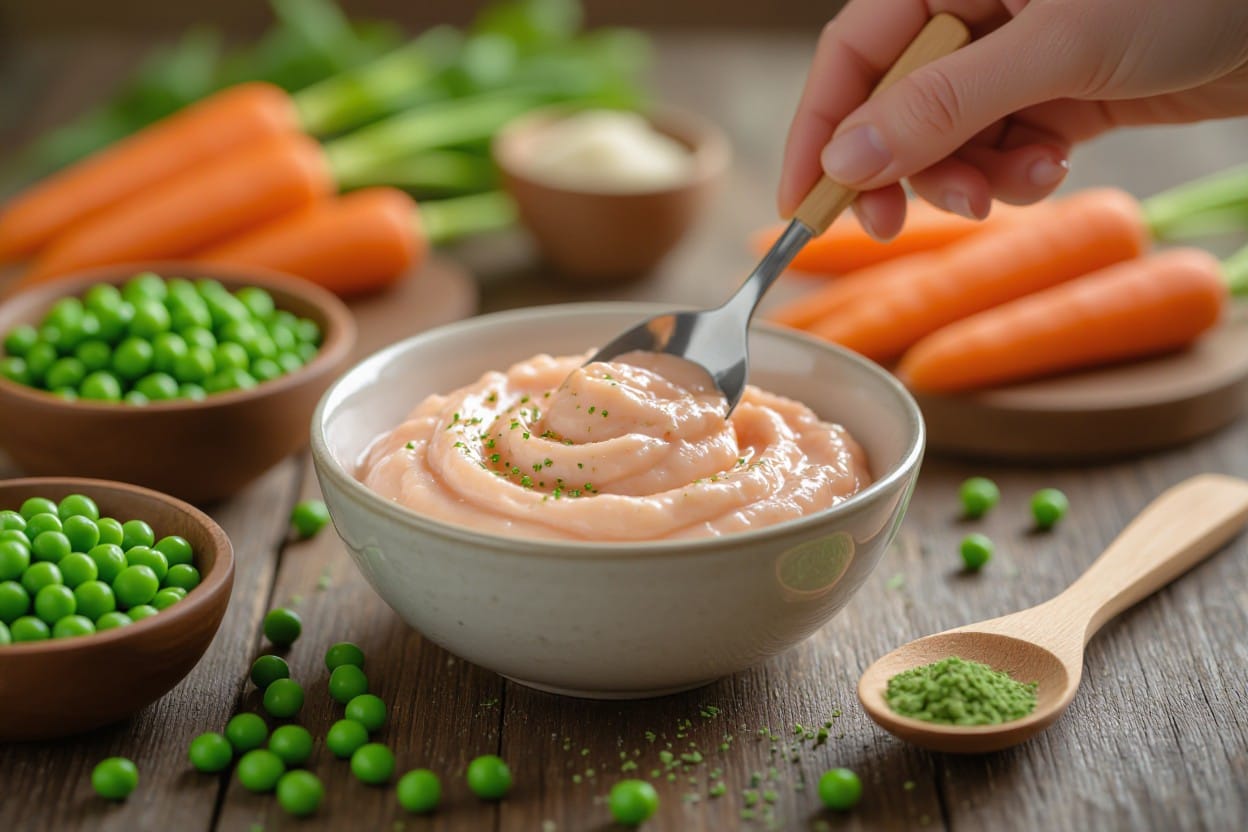
Preparation Techniques for Soft Treats
Blending and Processing for Smooth Textures
Use a high-speed blender or food processor to puree cooked protein into a uniform paste — pulse 30–60 seconds, then blend 1–2 minutes with 1–2 tbsp low-sodium chicken or fish broth per 100 g to reach a smooth, spreadable consistency ideal for soft cat treats for senior cats. Pass the purée through a fine mesh if fibers remain; avoid bones and any onion/garlic-containing ingredients to keep senior cat treats homemade safe for your pet.
Cooking Methods for Softness and Flavor
Prefer poaching or steaming over long dry baking: poach small cubes 7–10 minutes or steam 5–8 minutes to retain moisture and aroma, then mash or blend into patties. For added flavor and lipid balance, stir in 1 tsp fish oil per 100 g of mix after cooling.
Low-and-slow oven methods can work if you want molded treats—bake in silicone molds at 225°F (107°C) for 12–18 minutes until set but still soft. Use a water bath or steam finish to prevent crusting. Always verify poultry reaches a target internal temp of 165°F (74°C) before blending to ensure elderly cat nutrition treats are safe.
Serving Temperature for Maximum Appeal
Serve most soft cat treats for senior cats at room temperature or slightly warmed to unlock aroma: aim for about 95–100°F (35–38°C) — lukewarm releases scent without risking burns. Cold treats can be less enticing for picky elders; never serve hot items.
Warming methods: briefly microwave 3–5 seconds on low or place portions in a sealed bag in warm water for 1–2 minutes; always test temperature on your wrist before offering to your cat. For easy to chew cat treats senior cats recipes, gentle warming often increases acceptance and encourages appetite in cats with reduced smell sensitivity.
Serving Temperature Guide
| Temperature | Notes & Why You’d Use It |
| Chilled (<50°F / <10°C) | May be less appealing; useful for treats with added probiotics or to soothe mild oral inflammation. |
| Room (68–77°F / 20–25°C) | Safe and convenient; most cats accept room-temperature senior cat treats homemade preparations. |
| Lukewarm (95–100°F / 35–38°C) | Most appealing—enhances aroma and palatability, especially for cats with diminished smell; test before serving. |
| Hot (>120°F / >50°C) | Dangerous—risks burns to your cat’s mouth; cool down thoroughly before offering. |
Storage and Freshness of Treats
Best Practices for Storing Soft Treats
Keep your soft cat treats for senior cats in airtight glass or BPA-free plastic containers, portioned into single servings and labeled with a date; refrigerate at 34–40°F (1–4°C) and use within 3–5 days. Avoid leaving soft treats at room temperature beyond 2 hours, wash utensils between flavors to prevent cross-contamination, and store treats away from strong-smelling foods that can alter taste and smell.
Freezing Treats for Long-Term Storage
Portion homemade treats into ice-cube trays or silicone molds, wrap or seal in freezer bags, and freeze at 0°F (-18°C); maintain best quality for up to 3 months and thaw in the refrigerator overnight before serving to retain texture for easy to chew cat treats senior cats recipes.
Flash-freeze treats on a lined tray for 1–2 hours to prevent clumping, then transfer to vacuum-seal bags or double-layer freezer bags with as much air removed as possible; note that treats containing dairy or egg may change texture after freezing, cooked chicken, pureed pumpkin, and fish-based purees freeze well. Once thawed, use servings within 24 hours and do not refreeze because repeated freeze–thaw cycles raise bacterial risk and degrade nutrients.
Recognizing Spoiled Ingredients
Watch for sour or putrid odors, visible mold, slimy or tacky textures, discoloration, or unexpected gas bubbles—if you see any of these signs, discard immediately and avoid offering the treat to your cat; such checks help keep elderly cat nutrition treats safe.
Bacterial pathogens like Salmonella and Listeria can grow in improperly stored meat or egg-based treats, and fats can go rancid producing off-odors within 1–2 weeks at room temperature; if your cat develops vomiting or diarrhea within 12–24 hours of eating a suspect treat, save a sample and contact your veterinarian, and always err on the side of caution by discarding any treat with questionable smell, color, or texture.
Monitoring Senior Cat Health Through Treats
Tracking Appetite and Weight Changes
Weigh your cat weekly on the same scale and log servings of soft cat treats for senior cats and meals; commercial treats often run 3–8 kcal each, so track calories as well. A loss of 5% body weight in one month or 10% over six months signals a problem. Use senior cat treats homemade as appetite probes—note if she eats a handful of soft treats but refuses meals, and share those logs with your vet.
Mobility Assessment Using Treats
Place a treat on a surface 20–40 cm high and time how long it takes for your cat to jump or climb; many older cats slow noticeably and may refuse heights they previously cleared. Use easy to chew cat treats senior cats recipes to avoid jaw pain confounding the test, and flag any sudden reluctance or uneven gait as reduced mobility.
Run simple weekly drills: set three treat stations at floor level, 15 cm, and 30 cm, and record refusal, hesitation time, and limp presence on video for comparison. If your cat who formerly cleared a 40 cm counter now hesitates for >5 seconds or skips the 15 cm step, note the change and provide that timeline to your vet. Slow, progressive declines over 2–4 weeks often respond to joint supplements or pain management, but acute drops need immediate attention.
Hydration Monitoring Techniques
Offer treats made with low-sodium chicken or fish broth and track daily water intake; aim for about 45–60 ml/kg/day (a 4 kg cat ≈ 180–240 ml/day). Check for dehydration signs: tacky gums, sunken eyes, or reduced urine output, and log bowl levels to detect drops quickly.
Measure intake by marking the bowl and recording volumes each morning; switch to a water fountain if intake falls—studies show moving water can raise drinking by ~20–50%. Boost moisture with canned food or senior cat treats homemade using gelatin and broth (aim for treats >70% water by weight). If consumption falls below ~40 ml/kg/day or clinical signs appear, contact your veterinarian promptly.
Caregiver Support and Management
Incorporating Treats into Daily Feeding
Use soft cat treats for senior cats as supplements, not replacements, keeping treats under 10% of daily calories—about 15–25 kcal per treat for most 8–10 lb seniors. Scatter a couple of senior cat treats homemade options (tuna mousse, steamed chicken cubes with pumpkin) across the day to encourage appetite and hydration; rotate textures so your cat accepts both commercial soft bites and easy to chew cat treats senior cats recipes for dental variation.
Medication Integration with Soft Treats
Hide pills in a soft treat mousse or use a pill pocket sized to keep the tablet intact; many seniors accept a 1–2 teaspoon salmon or chicken puree. Verify each drug’s form first: do not crush extended-release or enteric-coated meds and confirm compatibility with your vet or pharmacist to avoid accidental underdosing or toxicity.
Practical techniques include mixing crushed palatable meds into 1–2 teaspoons of plain canned pumpkin or fish-flavored baby food and offering immediately; for whole tablets, press them into a small ball of senior cat treats homemade meat paste. One small clinic audit found pill acceptance rose from ~50% to ~90% after switching to soft, high-smell carriers. If you see mouth spitting or repeated vomiting, stop and consult your vet—some drugs require compounding into transdermal gels or flavored liquid formulations instead of being hidden.
Signs of Comfort and Well-being in Senior Cats
Look for steady appetite, regular grooming, playful moments, steady mobility, and consistent litter-box use; weight stability within about ±5% over three months and a body condition score around 4–5/9 are positive signs. Use small daily portions of soft treats to monitor appetite and detect subtle declines early.
Track weight weekly and note changes: a loss of more than 10% over 6 months or sudden appetite drop signals a problem. Watch for decreased jumping, increased hiding, purring changes, or altered stool—each can indicate pain, dental issues, or metabolic disease. Use elderly cat nutrition treats as assessment tools by offering a standard 20 kcal soft treat at the same time daily and recording acceptance, chewing difficulty, drooling, or refusal to help guide vet follow-up.
Engaging Soft Treats for Enrichment
Interactive Treat Games
Set up low-effort puzzles by hiding soft cat treats for senior cats in a snuffle mat or shallow muffin tin (place 6–8 pieces). Use easy to chew cat treats senior cats recipes like canned tuna gelatin bites to encourage foraging without excessive pawing; keep sessions to 3–5 minutes and limit treats to 6–10 per session. Avoid onions, garlic, and xylitol—those are toxic to cats.
Mental Stimulation Strategies
Rotate three flavors weekly (chicken, salmon, turkey) and use short, 5–10 minute food-puzzle sessions to boost engagement; start puzzles on the easiest setting and increase challenge slowly. Pair senior cat treats homemade morsels with clicker training for simple cues—five repetitions per session keeps learning rewarding without fatigue. Monitor chewability and switch to softer textures as needed.
Try a simple gelatin-based recipe: blend 56 g (2 oz) cooked chicken, 1 tbsp low-sodium chicken broth, and 1 tsp unflavored gelatin; pour into ice cube tray and chill until set—yields about 10 bite-sized pieces (~4–6 kcal each). Use this easy to chew cat treats senior cats recipes approach to control sodium and texture; adjust portioning so treats stay under 10% of daily calories (roughly <30–50 kcal/day for a 4–5 kg cat).
Social Interaction through Feeding
Incorporate hand-feeding and short treat-based training during petting to strengthen your bond: offer 2–3 soft treats during a 5-minute cuddle or grooming session. Use elderly cat nutrition treats that are moist and low in sodium to encourage gentle chewing; consistent, small rewards teach positive behaviors and increase trust without overfeeding.
Keep social feeding safe by supervising every session, avoiding bones and hard kibble, and limiting treats to under 10% of daily calories. For cats with dental issues, mash or spread soft treats on your finger or a lick pad—offer 3–5 small portions per interaction and track total treats to prevent weight gain or digestive upset.
Summing up
Ultimately, you can improve your older companion’s diet with soft cat treats for senior cats that prioritize gentle textures and balanced nutrients. By choosing senior cat treats homemade options or fortified elderly cat nutrition treats, you support joint, dental, and digestive health. Use easy to chew cat treats senior cats recipes to tailor portions and ingredients to your pet’s needs, and consult your veterinarian to ensure mixes fit your cat’s medical profile.
FAQ
Q: Why choose soft cat treats for senior cats over regular hard treats?
A: Soft cat treats for senior cats reduce chewing effort for worn or missing teeth, are gentler on sensitive gums, and can be formulated to deliver higher moisture and targeted nutrients. Compared with hard kibble-style treats, soft recipes can include added protein, omega-3s, and joint-support ingredients in an easy-to-eat texture that supports overall elderly cat nutrition treats needs.
Q: What safe ingredients should I use for senior cat treats homemade recipes?
A: Base ingredients that work well include cooked white-meat chicken, canned tuna or salmon in water (low sodium), cooked egg, and plain canned pumpkin for fiber and digestion. Use unflavored gelatin or low-sodium bone broth to create a soft, jelly-like texture. Add small amounts of fish oil or flaxseed oil for omega-3s, and a pinch of taurine if the recipe lacks animal protein. Avoid onion, garlic, chives, chocolate, grapes, raisins, raw dough, salt-heavy seasonings, and artificial sweeteners like xylitol.
Q: Can you give quick, easy to chew cat treats senior cats recipes I can try?
A: Yes — three simple options: 1) Salmon Gel Bites: blend canned salmon (drained) with low-sodium chicken broth, stir in unflavored gelatin dissolved per package, pour into silicone molds, chill until set. 2) Chicken & Pumpkin Puree Pouches: puree cooked chicken breast with canned pumpkin and a teaspoon of fish oil, pipe into small portions on parchment and chill; freeze extras. 3) Egg & Tuna Soft Cakes: whisk cooked egg, flake canned tuna, spoon into greased mini-muffin tin, bake at low temperature until just set for soft centers. All are easy to chew, support elderly cat nutrition treats goals, and fit senior cat treats homemade approaches.
Q: How should I store homemade soft treats and how much should I give?
A: Store refrigerated in an airtight container for 3–5 days or freeze in portioned batches for up to 3 months. Thaw only what you need to maintain freshness. Offer treats as small rewards—typically no more than 5–10% of daily caloric intake. For senior cats with reduced appetite or weight loss, use treats to supplement meals but track total calories and consult your vet if you need to increase intake.
Q: What health issues should I consider when making or buying soft treats for older cats?
A: Check for dental disease, kidney disease, pancreatitis, allergies, and weight management needs before selecting ingredients. Cats with kidney disease may need low-phosphorus, low-sodium options; diabetics need low-carbohydrate treats. Avoid added sugars and high-fat recipes for cats prone to pancreatitis. Always discuss new supplements or ingredient changes with your veterinarian to ensure treats align with your cat’s medical plan and overall elderly cat nutrition treats requirements.
